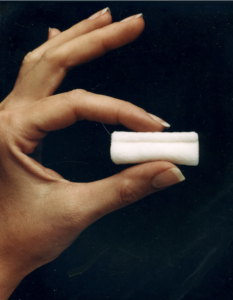How Can We Help?
Using a Kursuf

Women often find it difficult to determine whether their menstruation (hayd) has ended, especially as bleeding becomes intermittent in the latter days. Using a piece of cotton (kursuf) or an interlabial pad is instrumental in seeing any discharge while it is fresh and wet. The kursuf, measuring approximately 3 x 1 inches, is placed at the opening of the vagina, secured between the labia minora. Unlike a tampon, the kursuf is not fully inserted into the vaginal opening, and unlike a liner, it is not completely external to the vaginal area. The kursuf should ideally be made from a 100% natural, absorbent material because it is being used in a sensitive area and the utmost care is needed to prevent irritation. For example, a woman can use bamboo toilet paper, cotton fabric, medical gauze, reusable interlabial pads or any material she finds comfortable.
The Fiqh of It
Scholars recommend using a kursuf for multiple reasons, including when a woman has irregular bleeding (istihada) or chronic vaginal discharge. Depending on why a woman is using a kursuf will determine exactly how it is placed.
If a woman is using the kursuf to determine the end of her hayd, she can place it between the labia minora. The kursuf traps what is exiting from the body and prevents it from undergoing chemical change. When she looks at the kursuf after removing it, she can be certain that the colour is an accurate representation of her discharge. This can help identify the start and end of hayd. This use of the kursuf is allowed for both a virgin and non-virgin.
However, if she is using it to block the exit of istihada or vaginal discharge, she will need to place it between the labia minora and ensure it is inserted slightly into the vaginal opening (farj dakhil). This use of the kursuf is allowed for a non-virgin. If the kursuf is placed correctly, it acts as a barrier and prevents the impurity from exiting; a woman’s wudu remains intact and she can complete her worship without worry. However, if the outer edges of the kursuf become wet with impurity, despite being placed at the vaginal opening, her wudu is no longer valid.
(Muwatta’ 80/2, Radd al-Muhtar 289/1, Nihayat al-Nuqaya Sharh al-Wiqaya 122/2)

